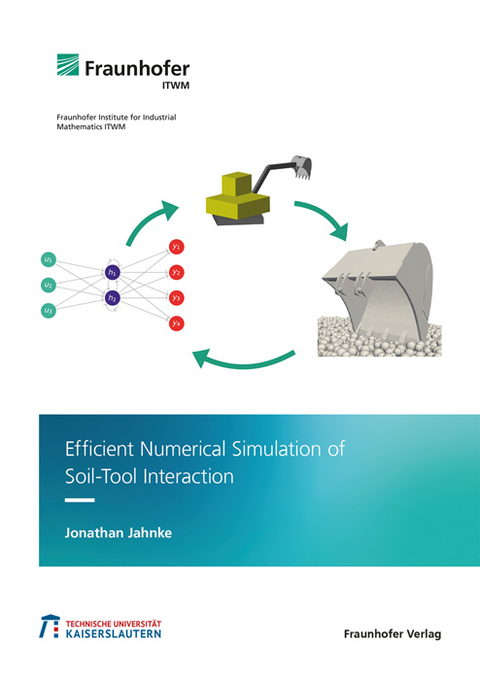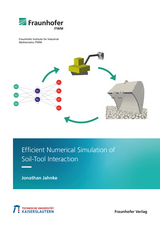Efficient Numerical Simulation of Soil-Tool Interaction
Seiten
This thesis describes the efficient computation of soil reaction forces for heavy machinery. We consider different particle methods and develop an innovative procedure to design two types of surrogate models, which can be evaluated in an efficient manner. The resulting methods predict soil-tool interaction forces in real-time. The power of the presented algorithms is verified with the example of an excavator simulator.
The simulation of soil-tool interaction forces using the Discrete Element Method (DEM) is widely established. In addition to an acceptable prediction quality, the efficient simulation of granular material on high performance clusters with modern parallelization strategies for the industrial applications is indispensable. Although, for relevant problem sizes such simulations are so far not real-time capable. Further on, the inclusion of the human-machine interaction at a driving simulator combined with soil-tool simulation poses many interesting research questions. We therefore strive for sufficient performance and consider alternative models and algorithms to achieve real-time capability. First, we discuss different types of particle models regarding force accuracy and efficiency. The pros and cons are pointed out and the suitability for real-time applications is discussed. Second, we present two machine learning algorithms which are real-time capable and allow force predictions in real-time. The application at the in-house excavator simulator is discussed and the capability is shown using relevant numerical examples.
The simulation of soil-tool interaction forces using the Discrete Element Method (DEM) is widely established. In addition to an acceptable prediction quality, the efficient simulation of granular material on high performance clusters with modern parallelization strategies for the industrial applications is indispensable. Although, for relevant problem sizes such simulations are so far not real-time capable. Further on, the inclusion of the human-machine interaction at a driving simulator combined with soil-tool simulation poses many interesting research questions. We therefore strive for sufficient performance and consider alternative models and algorithms to achieve real-time capability. First, we discuss different types of particle models regarding force accuracy and efficiency. The pros and cons are pointed out and the suitability for real-time applications is discussed. Second, we present two machine learning algorithms which are real-time capable and allow force predictions in real-time. The application at the in-house excavator simulator is discussed and the capability is shown using relevant numerical examples.
| Erscheinungsdatum | 20.09.2022 |
|---|---|
| Zusatzinfo | num., col. illus. and tab. |
| Verlagsort | Stuttgart |
| Sprache | englisch |
| Maße | 148 x 210 mm |
| Themenwelt | Mathematik / Informatik ► Mathematik ► Angewandte Mathematik |
| Naturwissenschaften ► Geowissenschaften ► Geologie | |
| Technik ► Maschinenbau | |
| Schlagworte | B • Bauingenieure • Bodenmechaniker • Data-based Modelling • Geologen • Informatiker • Lookup Tables • machine learning • Mathematiker • Physiker • realtime computation • Recurrent Neural Networks • Soil simulation |
| ISBN-10 | 3-8396-1835-5 / 3839618355 |
| ISBN-13 | 978-3-8396-1835-6 / 9783839618356 |
| Zustand | Neuware |
| Haben Sie eine Frage zum Produkt? |
Mehr entdecken
aus dem Bereich
aus dem Bereich
Buch | Softcover (2024)
Springer Vieweg (Verlag)
44,99 €
Anwendungen und Theorie von Funktionen, Distributionen und Tensoren
Buch | Softcover (2023)
De Gruyter Oldenbourg (Verlag)
69,95 €




